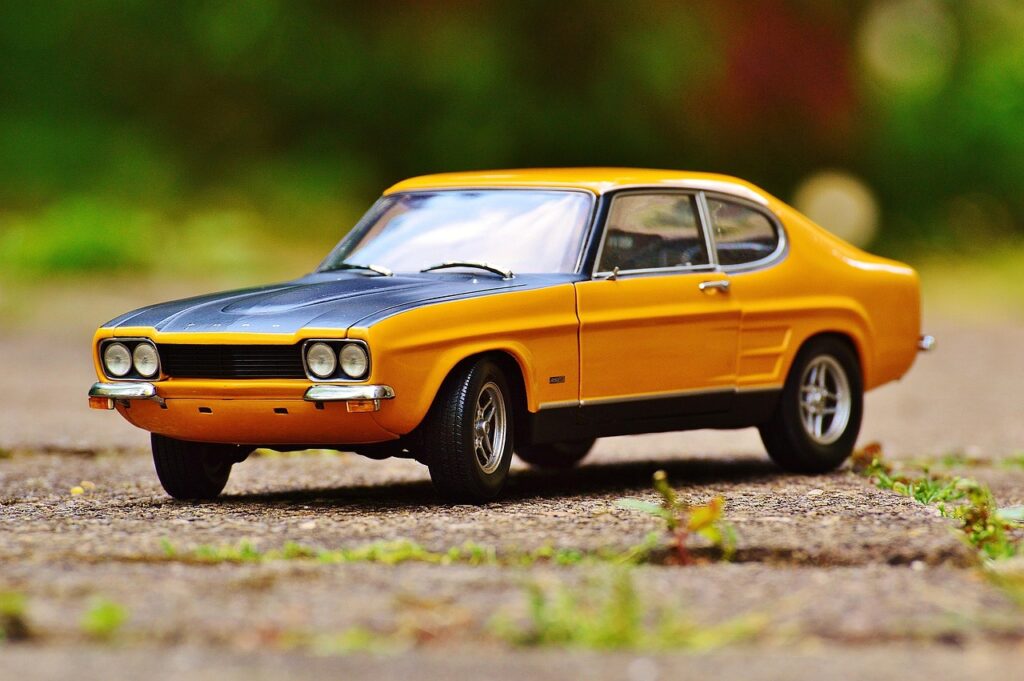
The 1960s represent a truly golden age for American automotive design and engineering, a decade where innovation was rampant and the pursuit of raw horsepower became an almost national obsession. Detroit’s manufacturers, particularly the formidable General Motors, were locked in an exhilarating battle to produce vehicles that were not only stylish and accessible but also exhilaratingly fast. This era, often celebrated as the height of the horsepower wars, saw the birth of numerous legendary models that continue to captivate enthusiasts and collectors worldwide.
Within this vibrant landscape, Chevrolet consistently stood out, churning out a remarkable array of cars that defined performance, luxury, and everyday appeal. From the sleek lines of its sports cars to the roaring power of its muscle machines, Chevy carved out an indelible legacy. These vehicles were more than just transportation; they were statements of freedom, engineering prowess, and American ingenuity, becoming an integral part of the nation’s cultural fabric.
Today, many of these magnificent machines have transcended their original purpose, evolving into highly sought-after treasures on the collector market. Their value stems not only from their rarity and condition but also from the rich stories they tell – tales of innovation, track dominance, and a passionate following. We embark on a journey to explore some of the most valuable Chevrolet cars from the 1960s, each a testament to an unforgettable era of automotive excellence, detailing what makes them such prized possessions for those who understand and appreciate their undeniable allure.

1. **1963 Chevrolet Corvette Z06**When the second-generation Corvette, famously dubbed the Sting Ray, first burst onto the scene in 1963, it was an instant sensation, lauded for its revolutionary aerodynamic contours and the iconic split rear window. However, Chevrolet, never one to rest on its laurels, pushed the boundaries of the Corvette’s potential even further. This ambition materialized in the form of the RPO Z06 package, an option not broadly advertised but specifically crafted for the discerning SCCA racing customer, who knew precisely how to navigate the factory order sheets to get their hands on a true track weapon.
Underneath its stunning fiberglass body, the Z06 package brought a host of significant technical and performance upgrades. At its heart was a potent 327 cubic inch small-block V8 engine, famously equipped with fuel injection, a sophisticated feature for its time, capable of delivering a formidable 360–375 horsepower. This impressive power was channeled through a close-ratio 4-speed manual transmission, providing drivers with the tight gear spacing essential for competitive track duty.
Beyond the powertrain, the Z06 received a comprehensive chassis overhaul designed to withstand the rigors of racing. This included heavy-duty brake linings, crucial for sustained high-performance stops, alongside large-diameter shocks and stiff springs that enhanced handling and stability. A notable addition for endurance events was the colossal 36.5-gallon fuel tank, strategically implemented to minimize pit stops. These enhancements transformed the Sting Ray into a genuine race car, capable of blistering acceleration from 0–60 mph in approximately 5.8 seconds and achieving a top speed near 140 mph.
The sheer exclusivity of the 1963 Chevrolet Corvette Z06 is a primary driver of its immense value and revered status today. With fewer than 200 units ever produced, its scarcity is undeniable. Coupled with its formidable racing pedigree and the cutting-edge technology it represented for the era, the Z06 holds a special, almost mythical, place in Corvette history. For collectors, discovering an original 1963 Z06 is akin to unearthing automotive gold, with examples frequently commanding prices in the high six or even seven figures at auction, a testament to its enduring legacy.
Read more about: The Vanishing Roar: 13 Iconic V8 Truck Engines That Disappeared from New Vehicle Specs

2. **1967 Chevrolet Chevelle SS 396**The Chevrolet Chevelle SS 396 rapidly ascended to become one of General Motors’ most celebrated muscle cars, expertly bridging the market gap between the more compact Novas and the larger, full-size Impalas. By the mid-1960s, Chevrolet had keenly recognized the burgeoning value and immense potential of the mid-size segment for performance-oriented vehicles, and the Chevelle SS 396 was a perfectly executed response, combining power, style, and practicality into an irresistible package that resonated deeply with the buying public.
At the core of the Chevelle SS 396’s appeal was its range of formidable engine options. Enthusiasts could choose from multiple power levels of the robust 396 cubic inch (6.5L) V8, starting at 325 horsepower, and stepping up to 350, or even a potent 375 horsepower. This diverse offering allowed buyers to tailor their Chevelle to their specific performance desires. Power was typically managed through a robust 4-speed Muncie “Rock Crusher” manual transmission, a favorite among performance drivers, or the equally capable Turbo-Hydramatic 400 automatic, offering smooth shifts for street cruising.
What truly sets certain examples of the 1967 Chevelle SS 396 apart in the collector world are the ultra-rare engine variants, particularly the L78 and the even more exclusive L89, which featured aluminum cylinder heads. These highly specialized powerplants pushed horsepower well beyond the standard 375-mark, turning an already potent muscle car into an absolute beast on the street and strip. Such factory-built high-performance configurations were produced in much smaller quantities, making them exceptionally desirable today.
While SS 396 Chevelles were produced in respectable numbers, the top-tier engine packages, especially the coveted L89, were surprisingly scarce, making them highly prized by today’s collectors. Restorers and enthusiasts willingly pay a significant premium for matching-numbers cars that boast these high-performance codes, recognizing their historical significance and incredible rarity. The 1967 Chevelle SS 396, particularly in its most potent guises, stands as a prime example of Chevrolet’s muscle car dominance and remains a celebrated icon that continues to command respect and high market values.
Car Model Information: 2017 Maserati Levante S
Name: Chevrolet Chevelle
Caption: 1970 Chevrolet Chevelle SS 396 Sport Coupe
Manufacturer: Chevrolet
Production: 1963–1977
ModelYears: 1964–1977
Class: Mid-size
Platform: GM A platform (RWD)
Layout: FR layout
Successor: Chevrolet Malibu
Categories: 1970s cars, All articles needing additional references, All articles that may contain original research, All articles with specifically marked weasel-worded phrases, All articles with unsourced statements
Summary: The Chevrolet Chevelle is a mid-sized automobile that was produced by the Chevrolet division of General Motors (GM) in three generations for the 1964 to 1977 model years. Part of the GM A-body platform, the Chevelle was one of Chevrolet’s most successful nameplates. Body styles included coupes, sedans, convertibles, and station wagons. The “Super Sport” versions were produced through the 1973 model year and Lagunas from 1973 through to 1976.
After a four-year absence, the El Camino was reintroduced as part of the new Chevelle lineup in 1964.
From 1964 to 1969, GM of Canada sold a modified version of the Chevelle that included a Pontiac-style grille, and a LeMans instrument panel, marketed as the Beaumont.
The Malibu was the top-of-the-line model to 1972, and completely replaced the Chevelle nameplate starting with the redesigned, and downsized 1978 model year.
Get more information about: Chevrolet Chevelle
Buying a high-performing used car >>>
Brand: Chevrolet Model: Chevelle SS 396
Price: $20,995 Mileage: 62,696 mi.
Read more about: The Road to Riches: 15 Classic Cars Skyrocketing in Value for Savvy Enthusiasts

3. **1969 Chevrolet Camaro COPO 427**The 1969 Chevrolet Camaro COPO 427 is not merely a car; it’s a legend, born out of ingenuity and a subtle circumvention of corporate mandates. General Motors had a strict policy limiting engine displacement in its smaller cars, including the Camaro, to 400 cubic inches. However, clever dealers and performance enthusiasts discovered a loophole through the Central Office Production Order (COPO) system. This allowed them to place special orders for Camaros equipped with the monstrous 427 big-block engine, in either the L72 iron-block or the ultra-rare all-aluminum ZL1 variants, effectively creating one of the most iconic collector’s cars ever produced.
These COPO Camaros were true wolves in sheep’s clothing, often lacking the flashy SS or Z/28 badging that adorned their more common brethren. This understated appearance earned them the moniker of “street sleepers,” allowing them to surprise unsuspecting rivals with their raw power. The heart of these machines was the formidable 427 cubic inch V8, officially rated at 425+ horsepower, though real-world outputs were often significantly higher. Power was typically delivered through a robust Muncie 4-speed manual transmission or a heavy-duty Turbo-Hydramatic 400 automatic, ensuring that all that power could be effectively put to the pavement.
The performance capabilities of the COPO 427 Camaros were nothing short of astounding for their era. Equipped with the L72 or ZL1 engine, these cars were capable of rocketing through the quarter-mile in the high 12-second range with minimal upgrades, a truly beastly performance by any standard of the late 1960s. Their ability to deliver such incredible speed while maintaining a somewhat unassuming exterior only added to their mystique and desirability among dedicated drag racers and street performance aficionados.
The total production numbers for COPO Camaros were remarkably small, especially for the all-aluminum ZL1 variants, which saw only 69 units built. This extreme scarcity, combined with their stealthy appearance, monstrous big-block power, and the compelling story of how they circumvented corporate rules, makes COPO Camaros genuine legends in muscle car circles. Today, these vehicles are among the most valuable and sought-after American muscle cars, representing a pinnacle of factory-built performance and a testament to the passionate defiance of an era.
Car Model Information: 2018 Chevrolet Camaro 1LS
Name: Chevrolet Camaro
Manufacturer: Chevrolet
Production: 1966–2002,2009–2023
ModelYears: 1967–2002,2010–2024
Class: Pony car
BodyStyle: coupe,convertible
Platform: GM F platform,GM Zeta platform,GM Alpha platform
Layout: Front-engine, rear-wheel-drive layout
Categories: 1970s cars, 1980s cars, 1990s cars, 2+2 coupés, 2000s cars
Summary: The Chevrolet Camaro is a mid-size American automobile manufactured by Chevrolet, classified as a pony car. It first went on sale on September 29, 1966, for the 1967 model year and was designed to compete with the Ford Mustang. The Camaro shared its platform and major components with the Firebird, produced by General Motors’ Pontiac division that was also introduced for the 1967 model year.
Four distinct generations of the Camaro were developed before production ended in 2002. The nameplate was revived on a concept car that evolved into the fifth-generation Camaro; production started on March 16, 2009.
Production of the sixth generation of the Camaro ended in December 2023, for the 2024 model year.
Get more information about: Chevrolet Camaro
Buying a high-performing used car >>>
Brand: Chevrolet Model: Camaro
Price: $18,785 Mileage: 69,196 mi.
Read more about: Unveiling American Automotive Excellence: A Deep Dive into Chevrolet’s 12 Most Legendary Models of All Time

4. **1963 Chevrolet Corvette “Sting Ray”**The 1963 Chevrolet Corvette “Sting Ray” marked a pivotal moment in automotive history, representing a complete rebirth for the iconic sports car. From the ground up, this new generation of Corvette was a masterclass in design and engineering, so much so that if anyone had consciously set out to create a “classic” car, they would have undoubtedly conceived something very much like the ’63 Sting Ray. Its radical styling, penned by the legendary Bill Mitchell, was instantly recognized as a timeless achievement.
The Sting Ray’s revolutionary design incorporated several key features that set it apart. It was four inches shorter and notably lighter than its predecessor, contributing to a more agile and responsive driving experience. The hidden headlights were a sleek, futuristic touch, adding to its mystique and clean lines. However, the most talked-about and defining characteristic was undoubtedly the split rear window on the coupe model. This daring design element was hailed as the coolest thing buyers had ever seen, giving the car an unforgettable and instantly recognizable silhouette.
The market’s reception to the 1963 Sting Ray was overwhelmingly positive, underscoring its immediate impact and appeal. Sales for the Corvette increased by a whopping 50% in its debut year, a clear indicator of just how much enthusiasts craved this fresh, aggressive design. This surge in popularity established the Sting Ray as a dominant force in the sports car market and cemented its place as a design icon.
Despite its popularity, the distinctive split rear window would only last for one season, being replaced by a conventional single-piece window in subsequent models due to visibility concerns. This limited production run of the split-window coupe has made it exceptionally rare and highly coveted. “O’boy do collectors love that model,” and for good reason—its unique aesthetic, combined with its status as the inaugural year of the second-generation Corvette, ensures that the 1963 Split-Window Sting Ray remains one of the most valuable and passionately sought-after Corvettes of all time, a genuine masterpiece of automotive art.
Car Model Information: 2025 Chevrolet Corvette Stingray w/3LT
Name: Chevrolet Corvette
Caption: 2021 Chevrolet Corvette C8
Manufacturer: Chevrolet
Production: 1953–present
ModelYears: bulleted list
Assembly: bulleted list
Class: Sports car
BodyStyle: coupé
Layout: Front-engine, rear-wheel-drive layout,Rear mid-engine, rear-wheel-drive layout
Categories: 1950s cars, 1960s cars, 1970s cars, 1980s cars, 1990s cars
Summary: The Chevrolet Corvette is a line of American two-door, two-seater sports cars manufactured and marketed by General Motors under the Chevrolet marque since 1953. Throughout eight generations, indicated sequentially as C1 to C8, the Corvette is noted for its performance, distinctive styling, lightweight fiberglass or composite bodywork, and competitive pricing. The Corvette has had domestic mass-produced two-seater competitors fielded by American Motors, Ford, and Chrysler; it is the only one continuously produced by a United States auto manufacturer. It serves as Chevrolet’s halo car.
In 1953, GM executives accepted a suggestion by Myron Scott, then the assistant director of the Public Relations department, to name the company’s new sports car after the corvette, a small, maneuverable warship. Initially, a relatively modest, lightweight 6‑cylinder convertible, subsequent introductions of V8 engines, competitive chassis innovations, and rear mid-engined layout have gradually moved the Corvette upmarket into the supercar class. In 1963, the second generation was introduced in coupe and convertible styles. The first three Corvette generations (1953–1982) employed body-on-frame construction, and since the C4 generation, introduced in 1983 as an early 1984 model, Corvettes have used GM’s unibody Y‑body platform. All Corvettes used front mid-engine configuration for seven generations, through 2019, and transitioned to a rear mid-engined layout with the C8 generation.
Initially manufactured in Flint, Michigan, and St. Louis, Missouri, the Corvette has been produced in Bowling Green, Kentucky, since 1981, which is also the location of the National Corvette Museum. The Corvette has become widely known as “America’s Sports Car.” Automotive News wrote that after being featured in the early 1960s television show Route 66, “the Corvette became synonymous with freedom and adventure,” ultimately becoming both “the most successful concept car in history and the most popular sports car in history.”
Get more information about: Chevrolet Corvette
Buying a high-performing used car >>>
Brand: Chevrolet Model: Corvette
Price: $85,990 Mileage: 3,779 mi.
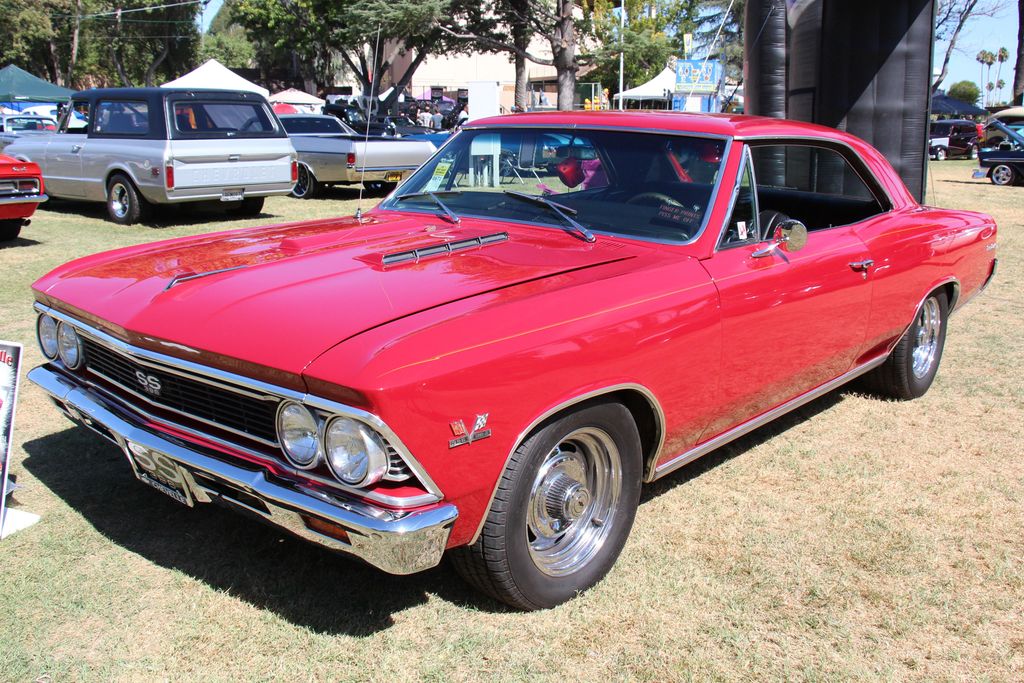
5. **1966 Chevrolet Chevelle SS396**The mid-1960s were undeniably the heyday of the muscle car, a period when manufacturers scrambled to offer the most powerful and visually striking vehicles possible. In this electrifying environment, Chevrolet had a formidable contender in the 1966 Chevelle SS396. This new, modified Chevelle was not just an iteration; it was a strong statement, perfectly embodying the raw power and aggressive styling that defined the muscle car era, quickly becoming a highly desirable machine for performance enthusiasts across America.
At its core, the 1966 Chevelle SS396 delivered serious firepower. It housed a big-block V-8 engine, starting with a substantial 325 horsepower, and offering an even more potent optional version that pushed output up to 375 horsepower. This robust engine, combined with a heavy-duty chassis, provided a solid foundation for blistering performance. The car also boasted clean, sharp new lines that exuded a sense of controlled aggression, making it visually appealing as well as mechanically capable.
Performance was where the SS396 truly shone, especially among the drag racing community. It quickly became a favorite at the drag strips, known for its ability to lay down impressive quarter-mile times and dominate the competition. This reputation for straight-line speed and brute force cemented its status as a serious performance contender, appealing directly to those who craved unadulterated power and thrill on the asphalt.
While specific rarity figures are not provided for the 1966 model compared to its later counterparts, its strong reputation as a “favorite at the drag strips” and its critical role in the burgeoning muscle car scene signify a deep historical and enthusiast appeal. This enduring regard contributes significantly to its value today, making it a highly desirable piece of automotive history for collectors who appreciate an authentic and powerful representation of Chevrolet’s muscle car heritage. Its undeniable presence and performance ensure its continued reverence.
Car Model Information: 2023 Jeep Wrangler Sahara
Name: Chevrolet Chevelle
Caption: 1970 Chevrolet Chevelle SS 396 Sport Coupe
Manufacturer: Chevrolet
Production: 1963–1977
ModelYears: 1964–1977
Class: Mid-size
Platform: GM A platform (RWD)
Layout: FR layout
Successor: Chevrolet Malibu
Categories: 1970s cars, All articles needing additional references, All articles that may contain original research, All articles with specifically marked weasel-worded phrases, All articles with unsourced statements
Summary: The Chevrolet Chevelle is a mid-sized automobile that was produced by the Chevrolet division of General Motors (GM) in three generations for the 1964 to 1977 model years. Part of the GM A-body platform, the Chevelle was one of Chevrolet’s most successful nameplates. Body styles included coupes, sedans, convertibles, and station wagons. The “Super Sport” versions were produced through the 1973 model year and Lagunas from 1973 through to 1976.
After a four-year absence, the El Camino was reintroduced as part of the new Chevelle lineup in 1964.
From 1964 to 1969, GM of Canada sold a modified version of the Chevelle that included a Pontiac-style grille, and a LeMans instrument panel, marketed as the Beaumont.
The Malibu was the top-of-the-line model to 1972, and completely replaced the Chevelle nameplate starting with the redesigned, and downsized 1978 model year.
Get more information about: Chevrolet Chevelle
Buying a high-performing used car >>>
Brand: Chevrolet Model: Chevelle SS396
Price: $31,077 Mileage: 41,012 mi.
Read more about: Buckle Up, Boomers! 12 Legendary Rides from Your Youth That Are STILL a Total Blast to Drive
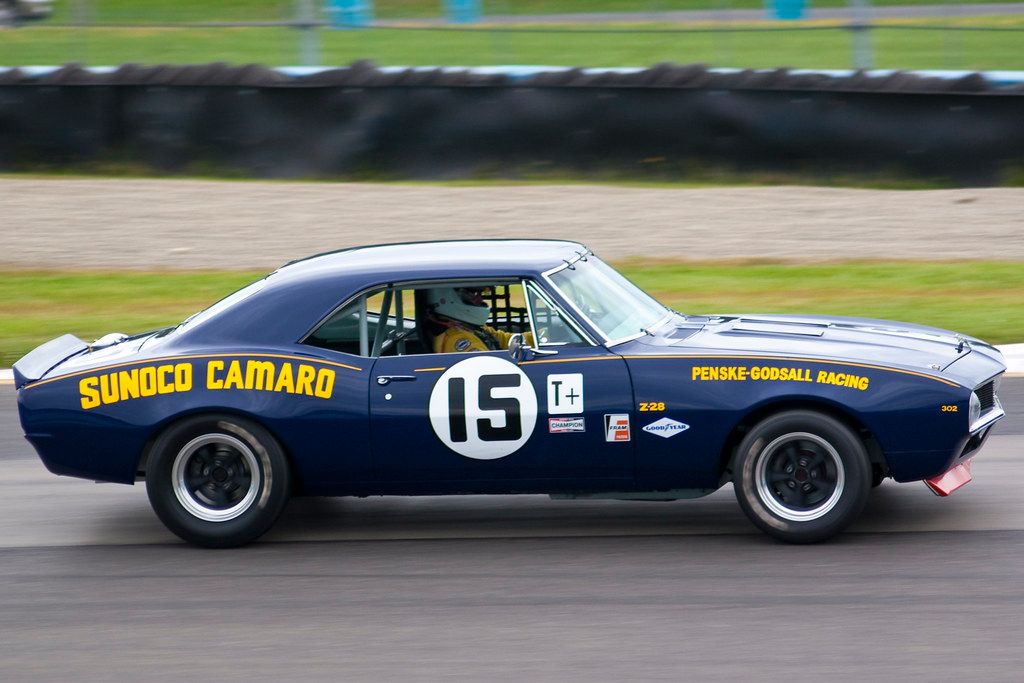
6. **1967 Chevrolet Camaro Z-28**In a direct and forceful response to Ford’s wildly successful Mustang, Chevrolet developed the Camaro, launching its own formidable pony car into the highly competitive market. Yet, the Camaro was far from a mere clone; it carved out its own distinct identity with unique curvy styling that immediately captured attention. Among its many variants, the 1967 Chevrolet Camaro Z-28 stood out as a specialized package, purpose-built for the serious racing enthusiast, embodying Chevrolet’s commitment to high-performance motorsport.
Beyond its standard allure, the Camaro offered various enhancements, including a popular Rally Sport package that featured distinctive hidden headlights, adding an air of sophistication and aggression to its appearance. However, it was the Z-28 package that truly differentiated it. This wasn’t just an appearance upgrade; it was a meticulously engineered performance package centered around a high-revving small block 302 cubic inch (cid) engine. This specific engine displacement was chosen to meet the regulations for SCCA Trans-Am racing, signaling its clear competitive intentions.
The Z-28 package didn’t stop at the engine; it was a holistic approach to racing readiness. It included characteristic racing stripes that boldly proclaimed its performance credentials, special rally wheels for improved handling, and unique red stripe tires that provided enhanced grip. Every aspect of the Z-28 was geared towards optimal track performance and a thrilling driving experience, making it a highly specialized and coveted machine for those with an appetite for speed and competition.
The 1967 Camaro Z-28, with its dedicated focus on racing enthusiasts and its specialized engine and features, quickly earned iconic status. Its direct connection to motorsport, particularly Trans-Am racing, makes it a highly desirable collector’s item today. For enthusiasts, it represents not just a powerful car, but a piece of Chevrolet’s racing heritage, commanding significant attention and value in the classic car market. Its distinct identity and track-bred capabilities ensure its lasting appeal and revered place in automotive lore.
Car Model Information: 2018 Chevrolet Camaro 1LS
Name: Chevrolet Camaro
Manufacturer: Chevrolet
Production: 1966–2002,2009–2023
ModelYears: 1967–2002,2010–2024
Class: Pony car
BodyStyle: coupe,convertible
Platform: GM F platform,GM Zeta platform,GM Alpha platform
Layout: Front-engine, rear-wheel-drive layout
Categories: 1970s cars, 1980s cars, 1990s cars, 2+2 coupés, 2000s cars
Summary: The Chevrolet Camaro is a mid-size American automobile manufactured by Chevrolet, classified as a pony car. It first went on sale on September 29, 1966, for the 1967 model year and was designed to compete with the Ford Mustang. The Camaro shared its platform and major components with the Firebird, produced by General Motors’ Pontiac division that was also introduced for the 1967 model year.
Four distinct generations of the Camaro were developed before production ended in 2002. The nameplate was revived on a concept car that evolved into the fifth-generation Camaro; production started on March 16, 2009.
Production of the sixth generation of the Camaro ended in December 2023, for the 2024 model year.
Get more information about: Chevrolet Camaro
Buying a high-performing used car >>>
Brand: Chevrolet Model: Camaro
Price: $18,785 Mileage: 69,196 mi.
Read more about: Unveiling American Automotive Excellence: A Deep Dive into Chevrolet’s 12 Most Legendary Models of All Time
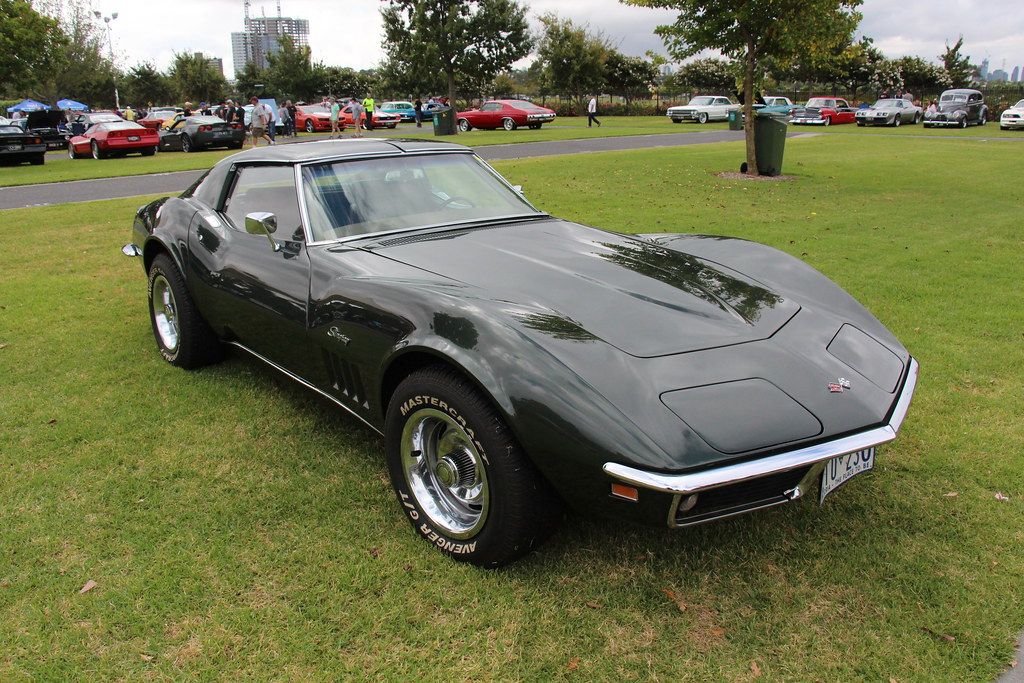
7. **1968 Chevrolet Corvette**The 1968 Chevrolet Corvette marked a significant evolutionary step for the celebrated sports car, bringing a dramatic restyling that moved away from the earlier Sting Ray nomenclature (though the name would return later). This new iteration was conceived to be “more curvaceous and flashy,” aiming to update its aesthetic appeal while retaining the proven engineering beneath. Despite some initial skepticism from purists who felt the line had been “ruined,” the market response told a different story, proving the new design was a resounding success.
Underneath its freshly sculpted, more aggressive bodywork, the 1968 Corvette wisely retained the same underbody and chassis that had proven so effective in previous generations. This combination of new aesthetics and established mechanical reliability was a winning formula. The redesign also encompassed other models in Chevrolet’s lineup, including the Chevelle and Chevy II, signaling a broader push for fresh designs across various segments. Chevrolet’s diverse lineup, including the Corvette, aimed to offer a compelling blend of “performance, value or luxury” depending on the chosen model.
One of the most notable innovations for the 1968 coupe was the introduction of “lift off roof panels that made it into a faux ragtop.” These removable panels, now commonly known as T-tops, allowed drivers to enjoy an open-air experience akin to a convertible, but with the structural rigidity and security of a coupe. This ingenious feature proved incredibly popular and quickly became a signature element of the Corvette, adding to its allure and versatility. It was a significant selling point that appealed to a wide range of buyers.
Far from being a setback, the 1968 restyling proved to be a triumph, with sales increasing significantly. This generation of Corvette continued to deliver on the brand’s promise of high-performance driving combined with evolving design and innovative features. Its enduring appeal as a collector’s car today stems from its distinctive body style, the groundbreaking T-top roof, and its pivotal role in the ongoing evolution of America’s most iconic sports car. It stands as a testament to Chevrolet’s ability to continually reimagine and refine its legends, solidifying its place among the valuable cars of the 1960s.
Car Model Information: 2019 Chevrolet Corvette Stingray
Name: Chevrolet Corvette
Caption: 2021 Chevrolet Corvette C8
Manufacturer: Chevrolet
Production: 1953–present
ModelYears: bulleted list
Assembly: bulleted list
Class: Sports car
BodyStyle: coupé
Layout: Front-engine, rear-wheel-drive layout,Rear mid-engine, rear-wheel-drive layout
Categories: 1950s cars, 1960s cars, 1970s cars, 1980s cars, 1990s cars
Summary: The Chevrolet Corvette is a line of American two-door, two-seater sports cars manufactured and marketed by General Motors under the Chevrolet marque since 1953. Throughout eight generations, indicated sequentially as C1 to C8, the Corvette is noted for its performance, distinctive styling, lightweight fiberglass or composite bodywork, and competitive pricing. The Corvette has had domestic mass-produced two-seater competitors fielded by American Motors, Ford, and Chrysler; it is the only one continuously produced by a United States auto manufacturer. It serves as Chevrolet’s halo car.
In 1953, GM executives accepted a suggestion by Myron Scott, then the assistant director of the Public Relations department, to name the company’s new sports car after the corvette, a small, maneuverable warship. Initially, a relatively modest, lightweight 6‑cylinder convertible, subsequent introductions of V8 engines, competitive chassis innovations, and rear mid-engined layout have gradually moved the Corvette upmarket into the supercar class. In 1963, the second generation was introduced in coupe and convertible styles. The first three Corvette generations (1953–1982) employed body-on-frame construction, and since the C4 generation, introduced in 1983 as an early 1984 model, Corvettes have used GM’s unibody Y‑body platform. All Corvettes used front mid-engine configuration for seven generations, through 2019, and transitioned to a rear mid-engined layout with the C8 generation.
Initially manufactured in Flint, Michigan, and St. Louis, Missouri, the Corvette has been produced in Bowling Green, Kentucky, since 1981, which is also the location of the National Corvette Museum. The Corvette has become widely known as “America’s Sports Car.” Automotive News wrote that after being featured in the early 1960s television show Route 66, “the Corvette became synonymous with freedom and adventure,” ultimately becoming both “the most successful concept car in history and the most popular sports car in history.”
Get more information about: Chevrolet Corvette
Buying a high-performing used car >>>
Brand: Chevrolet Model: Corvette
Price: $47,990 Mileage: 20,872 mi.
Read more about: The Road to Riches: 15 Classic Cars Skyrocketing in Value for Savvy Enthusiasts

8. **1960 Chevrolet Impala**The dawn of the 1960s saw the Chevrolet Impala standing proudly as a titan of American automotive sales, consistently outselling all other General Motors lines by a remarkable margin of at least four to one. This phenomenal success solidified its position as one of America’s undisputed favorites, a testament to Chevrolet’s mastery in blending accessible luxury with widespread appeal during a period of burgeoning consumer confidence. Its ubiquitous presence on the roads signified both suburban dream and open-road adventure, cementing its place in the national consciousness.
For the 1960 model year, the Impala maintained a visual lineage from its immediate predecessor, carrying forward the distinctive “bat wing” tailfins that had defined its 1959 aesthetic. While the core body structure remained familiar, Chevrolet’s design team implemented subtle yet effective updates, primarily focusing on a refreshed grille and various exterior trim pieces. These refinements ensured the Impala stayed contemporary and attractive, skillfully balancing continuity with a fresh appeal that kept it at the forefront of buyer desire and a standout in its segment.
Despite the relatively minor aesthetic tweaks, the Impala’s enduring popularity was rooted in its robust engineering and the impressive array of powertrain options that typically included powerful V8 engines delivering smooth, confident performance. This combination of undeniable style, comfortable cruising, and substantial power ensured its continued reign as a market leader. With a convertible model priced at approximately $2,950, the 1960 Impala represented significant value, making it a cherished piece of automotive history for collectors who appreciate an iconic design and strong sales legacy.
Car Model Information: 1966 Chevrolet Impala SS
Name: Chevrolet Impala
Caption: Fourth-generation model (1967)
Manufacturer: Chevrolet
Production: 1957–1985,1994–1996,1999–2020
ModelYears: 1958–1985,1994–1996,2000–2020
Predecessor: Chevrolet Bel Air,Chevrolet Lumina#Second generation (1995–2001)
Successor: Chevrolet SS,Chevrolet Caprice
Platform: GM B platform,GM W platform,GM W platform (GMX211) (2005–2013),GM Epsilon platform#Epsilon II
Class: Full-size car,Mid-size car
Layout: Front-engine, rear-wheel-drive layout,Front-engine, front-wheel-drive layout
Categories: 1960s cars, 1970s cars, 1980s cars, 1990s cars, 2000s cars
Summary: The Chevrolet Impala () is a full-size car that was built by Chevrolet for model years 1958 to 1985, 1994 to 1996, and 2000 to 2020. The Impala was Chevrolet’s popular flagship passenger car and was among the better-selling American-made automobiles in the United States.
For its debut in 1958, the Impala was distinguished from other models by its symmetrical triple taillights. The Chevrolet Caprice was introduced as a top-line Impala Sport Sedan for model year 1965, later becoming a separate series positioned above the Impala in 1966, which, in turn, remained above the Chevrolet Bel Air and the Chevrolet Biscayne. The Impala continued as Chevrolet’s most popular full-sized model through the mid-1980s. Between 1994 and 1996, the Impala was revised as a 5.7-liter V8–powered version of the Chevrolet Caprice Classic sedan.
In 2000, the Impala was reintroduced again as a mainstream front-wheel drive car. In February 2014, the 2014 Impala ranked No. 1 among Affordable Large Cars in U.S. News & World Report’s rankings. When the 10th generation of the Impala was introduced for the 2014 model year, the 9th generation was rebadged as the Impala Limited and sold only to fleet customers through 2016. During that time, both versions were sold in the United States and Canada. The 10th-generation Impala was also sold in the Middle East and South Korea.
Get more information about: Chevrolet Impala
Buying a high-performing used car >>>
Brand: Chevrolet Model: Impala
Price: $56,991 Mileage: 51,426 mi.
Read more about: The Road to Riches: 15 Classic Cars Skyrocketing in Value for Savvy Enthusiasts

9. **1961 Chevrolet Corvair Monza**When the Corvair debuted in 1960, it represented a radical departure for Chevrolet, featuring an air-cooled, rear-mounted six-cylinder engine and clean, crisp styling unlike anything else in the brand’s lineup. This unconventional design, a bold move by American standards, positioned the Corvair as an innovative compact contender. It quickly established a unique identity, initially available in 500 or the slightly more refined 700 trim levels, setting the stage for its subsequent evolution and wider appeal.
The Corvair Monza, introduced as a sportier variant, truly captured the imagination of the public. This model distinguished itself with coveted bucket seats and a sophisticated center console, elevating its interior beyond standard compact fare. While a four-door version was produced, the two-door coupe emerged as the clear winner, attracting a remarkably loyal and enthusiastic following. This focus on driver engagement and comfort made the Monza a compelling choice for a new generation of buyers seeking a more spirited compact car experience.
More than just a trim package, the Monza embodied a shift in Chevrolet’s strategy, demonstrating that a compact car could also offer style and a driver-centric appeal. Its relatively accessible price point, around $2,275, made this sporty innovation attainable for many. Today, the 1961 Corvair Monza stands as a testament to Chevrolet’s daring engineering and design prowess in the early 1960s, a beloved and distinctive collectible for those who appreciate its unique place in automotive history and its role in fostering a passionate enthusiast base.
Car Model Information: 2017 Maserati Levante S
Caption: 1964 Chevrolet Corvair Monza
Name: Chevrolet Corvair
Manufacturer: Chevrolet
Production: July 1959
Platform: GM Z platform
Chassis: Unibody
ModelYears: 1960–1969
Assembly: United States,Kansas City, Missouri,Oakland, California,Van Nuys,St. Louis,Flint, Michigan,Belgium,Canada,Mexico,South Africa,Switzerland,Venezuela
Class: Compact car
Successor: Chevrolet Vega
Layout: Rear-engine, rear-wheel-drive layout
Categories: All Wikipedia articles written in American English, All articles lacking in-text citations, All articles needing additional references, All articles with dead external links, All articles with specifically marked weasel-worded phrases
Summary: The Chevrolet Corvair is a rear-engined, air-cooled compact car manufactured and marketed by Chevrolet over two generations from the 1960 through 1969 model years. The Corvair was a response to the increasing popularity of small, fuel-efficient automobiles, particularly the imported Volkswagen Beetle and American-built compacts like the Rambler American and Studebaker Lark.
The first generation (1960–1964) was offered in four-door sedan, two-door coupe, convertible, and four-door station wagon configurations. A two- and four-door hardtop, as well as a convertible, were available as second-generation variants (1965–1969). The Corvair platform was also offered as a subseries known as the Corvair 95 (1961–1965), which consisted of a passenger van, commercial van, and pickup truck variant. Total production was approximately 1.8 million vehicles from 1960 until 1969.
The name “Corvair” was first applied in 1954 to a Corvette-based concept with a hardtop fastback-styled roof, part of the Motorama traveling exhibition. When applied to the production models, the “air” part referenced the engine’s cooling system.
A prominent aspect of the Corvair’s legacy derives from controversy surrounding the handling of early models equipped with rear swing axles, articulated aggressively by Ralph Nader’s Unsafe at Any Speed but tempered by a 1972 Texas A&M University safety commission report for the National Highway Traffic Safety Administration (NHTSA) which found that the 1960–1963 Corvair possessed no greater potential for loss of control in extreme situations than contemporary compacts.
To better counter popular inexpensive subcompact competitors, notably the Beetle and Japanese imports such as the Datsun 510, GM replaced the Corvair with the more conventional Chevrolet Vega in 1970.
Get more information about: Chevrolet Corvair
Buying a high-performing used car >>>
Brand: Chevrolet Model: Corvair Monza
Price: $20,995 Mileage: 62,696 mi.
Read more about: Unsung Heroes of the Asphalt: 14 Low-Maintenance Classic Cars That Deserve a Spot in Your Garage

10. **1962 Chevrolet Impala**For the 1962 model year, Chevrolet’s full-size offerings, particularly the Impala, received a significant facelift, imbuing them with a more substantial and imposing presence. This design refresh gave the big Chevy a distinctly larger look, contributing to its continued dominance in the highly competitive family car market. These stylistic updates ensured the Impala remained a contemporary and aspirational vehicle for American households, reinforcing its status as a benchmark for full-size comfort and style.
A key innovation for the 1962 Impala Sport Coupe was its distinctive new roof treatment. By ingeniously making the rear window smaller and enlarging the rear pillars, designers created an illusion, giving the Sport Coupe the sophisticated appearance of a soft-top convertible while retaining the practicality and structural integrity of a fixed-roof vehicle. This clever design detail further enhanced the Impala’s visual appeal, offering a touch of open-air luxury without the added complexity or cost of a true convertible.
Beyond the Impala, 1962 was also notable for Chevrolet’s introduction of the Chevy II, a new compact car specifically engineered to challenge Ford’s popular Falcon. However, the Impala continued to be a sales powerhouse, with its refined styling and proven performance appealing to a vast segment of buyers. The 1962 Impala, with its updated aesthetics and enduring appeal for around $2,860, remains a highly collectible example of Chevrolet’s robust full-size design, representing a significant moment in the evolution of American family sedans and coupes.
Car Model Information: 1966 Chevrolet Impala SS
Name: Chevrolet Impala
Caption: Fourth-generation model (1967)
Manufacturer: Chevrolet
Production: 1957–1985,1994–1996,1999–2020
ModelYears: 1958–1985,1994–1996,2000–2020
Predecessor: Chevrolet Bel Air,Chevrolet Lumina#Second generation (1995–2001)
Successor: Chevrolet SS,Chevrolet Caprice
Platform: GM B platform,GM W platform,GM W platform (GMX211) (2005–2013),GM Epsilon platform#Epsilon II
Class: Full-size car,Mid-size car
Layout: Front-engine, rear-wheel-drive layout,Front-engine, front-wheel-drive layout
Categories: 1960s cars, 1970s cars, 1980s cars, 1990s cars, 2000s cars
Summary: The Chevrolet Impala () is a full-size car that was built by Chevrolet for model years 1958 to 1985, 1994 to 1996, and 2000 to 2020. The Impala was Chevrolet’s popular flagship passenger car and was among the better-selling American-made automobiles in the United States.
For its debut in 1958, the Impala was distinguished from other models by its symmetrical triple taillights. The Chevrolet Caprice was introduced as a top-line Impala Sport Sedan for model year 1965, later becoming a separate series positioned above the Impala in 1966, which, in turn, remained above the Chevrolet Bel Air and the Chevrolet Biscayne. The Impala continued as Chevrolet’s most popular full-sized model through the mid-1980s. Between 1994 and 1996, the Impala was revised as a 5.7-liter V8–powered version of the Chevrolet Caprice Classic sedan.
In 2000, the Impala was reintroduced again as a mainstream front-wheel drive car. In February 2014, the 2014 Impala ranked No. 1 among Affordable Large Cars in U.S. News & World Report’s rankings. When the 10th generation of the Impala was introduced for the 2014 model year, the 9th generation was rebadged as the Impala Limited and sold only to fleet customers through 2016. During that time, both versions were sold in the United States and Canada. The 10th-generation Impala was also sold in the Middle East and South Korea.
Get more information about: Chevrolet Impala
Buying a high-performing used car >>>
Brand: Chevrolet Model: Impala
Price: $56,991 Mileage: 51,426 mi.
Read more about: The Road to Riches: 15 Classic Cars Skyrocketing in Value for Savvy Enthusiasts
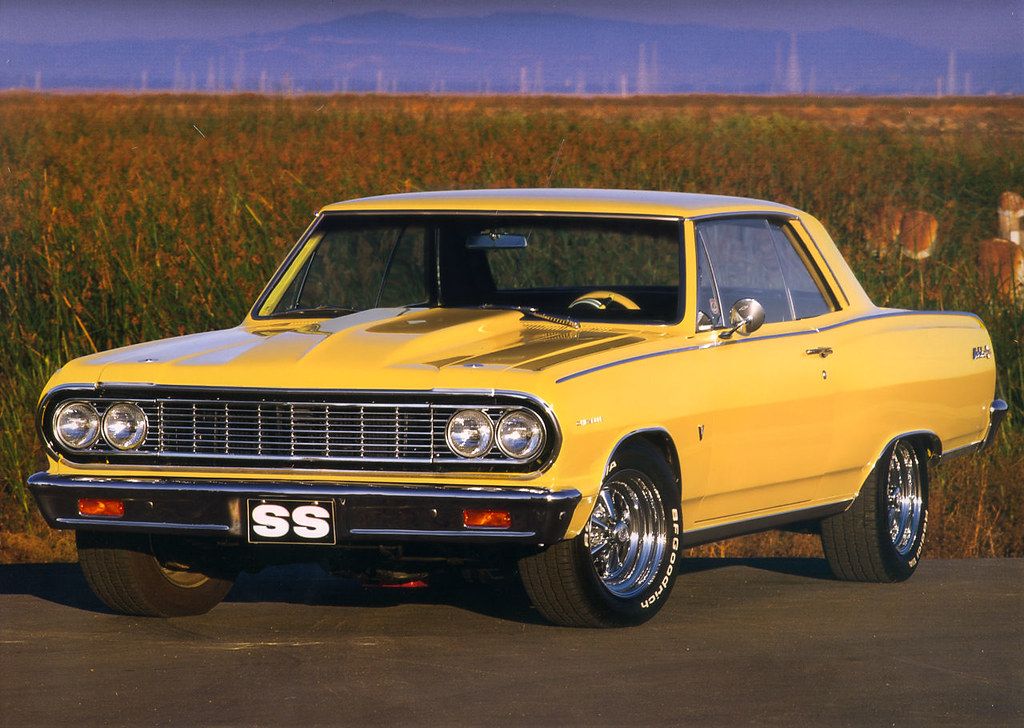
11. **1964 Chevrolet Chevelle**The mid-1960s brought a fierce battle in the automotive market, particularly with Ford’s successful Fairlane. In response, Chevrolet introduced the Chevelle in 1964, a brand-new mid-sized offering that immediately struck a chord with the American public. Available in either regular or the more aggressive SS Sport trim, the Chevelle was an instant hit, demonstrating Chevrolet’s uncanny ability to anticipate and meet consumer demand with compelling new products. Its launch showcased the brand’s seemingly infallible touch, earning wide buyer confidence.
The Chevelle’s success was not merely a matter of timing; it was a testament to a well-executed design strategy that offered versatility and style in a practical, intermediate package. Its clean lines and balanced proportions made it appealing across various demographics, while the availability of the SS Sport trim signaled Chevrolet’s commitment to performance in the burgeoning muscle car segment. This dual appeal allowed the Chevelle to capture a broad market, from families to enthusiasts, further solidifying Chevrolet’s lead.
From its debut, the Chevelle seemed to epitomize Chevrolet’s Midas touch, with model after model proving successful and endearing the brand to buyers nationwide. At an approachable price point of approximately $2,495, the 1964 Chevelle presented an irresistible value proposition. Today, this inaugural Chevelle is highly regarded by collectors, not only for its clean styling and accessible performance but also for its foundational role in establishing Chevrolet’s dominance in the mid-size segment, a lineage that would produce some of the most revered muscle cars in history.
Car Model Information: 1969 Chevrolet Chevelle SS
Name: Chevrolet Chevelle
Caption: 1970 Chevrolet Chevelle SS 396 Sport Coupe
Manufacturer: Chevrolet
Production: 1963–1977
ModelYears: 1964–1977
Class: Mid-size
Platform: GM A platform (RWD)
Layout: FR layout
Successor: Chevrolet Malibu
Categories: 1970s cars, All articles needing additional references, All articles that may contain original research, All articles with specifically marked weasel-worded phrases, All articles with unsourced statements
Summary: The Chevrolet Chevelle is a mid-sized automobile that was produced by the Chevrolet division of General Motors (GM) in three generations for the 1964 to 1977 model years. Part of the GM A-body platform, the Chevelle was one of Chevrolet’s most successful nameplates. Body styles included coupes, sedans, convertibles, and station wagons. The “Super Sport” versions were produced through the 1973 model year and Lagunas from 1973 through to 1976.
After a four-year absence, the El Camino was reintroduced as part of the new Chevelle lineup in 1964.
From 1964 to 1969, GM of Canada sold a modified version of the Chevelle that included a Pontiac-style grille, and a LeMans instrument panel, marketed as the Beaumont.
The Malibu was the top-of-the-line model to 1972, and completely replaced the Chevelle nameplate starting with the redesigned, and downsized 1978 model year.
Get more information about: Chevrolet Chevelle
Buying a high-performing used car >>>
Brand: Chevrolet Model: Chevelle
Price: $119,550 Mileage: 93 mi.
Read more about: Savvy Choices: 11 Best Used Hybrid Vehicles That Reliably Deliver Over 40 MPG
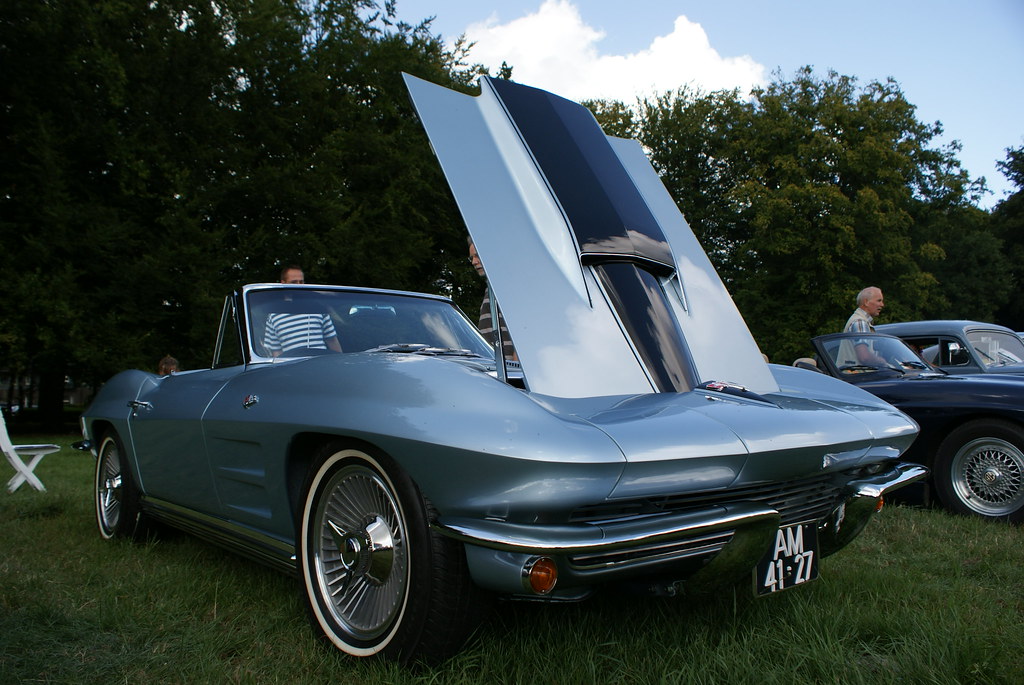
12. **1964 Chevrolet Corvette**The 1964 Chevrolet Corvette, while carrying the “Sting Ray” designation into its second year, presented a notable, albeit subtle, evolution from its groundbreaking 1963 predecessor. The most significant and indeed, only, change for this model year was the elimination of the distinctive split rear window on the coupe. This design modification, implemented due to concerns regarding driver visibility, resulted in a conventional, solid glass rear window, subtly altering the car’s iconic silhouette and marking a distinct point in its early C2 generation history.
Despite this singular alteration, the 1964 Corvette continued to captivate buyers and maintain its status as America’s premier sports car. The fundamental engineering and performance characteristics that made the Sting Ray a sensation remained untouched, offering thrilling acceleration and sophisticated handling. Interestingly, the convertible model of the 1964 Corvette achieved a remarkable milestone: it was the only Corvette model where the open-top variant outsold its coupe counterpart, a testament to its widespread appeal and desirability.
Part of the convertible’s boosted popularity was attributed to its prominent feature on the immensely popular television show, *Route 66*. This exposure undoubtedly enhanced its allure, showcasing the Corvette’s capabilities and iconic style to a broad audience. With a price point of around $4,105, the 1964 Corvette convertible offered an aspirational driving experience. Today, this model, particularly the convertible, is a prized possession for collectors, valued for its direct link to an iconic era of sports car design and its unique place in popular culture.
Car Model Information: 2025 Chevrolet Corvette Stingray w/3LT
Name: Chevrolet Corvette
Caption: 2021 Chevrolet Corvette C8
Manufacturer: Chevrolet
Production: 1953–present
ModelYears: bulleted list
Assembly: bulleted list
Class: Sports car
BodyStyle: coupé
Layout: Front-engine, rear-wheel-drive layout,Rear mid-engine, rear-wheel-drive layout
Categories: 1950s cars, 1960s cars, 1970s cars, 1980s cars, 1990s cars
Summary: The Chevrolet Corvette is a line of American two-door, two-seater sports cars manufactured and marketed by General Motors under the Chevrolet marque since 1953. Throughout eight generations, indicated sequentially as C1 to C8, the Corvette is noted for its performance, distinctive styling, lightweight fiberglass or composite bodywork, and competitive pricing. The Corvette has had domestic mass-produced two-seater competitors fielded by American Motors, Ford, and Chrysler; it is the only one continuously produced by a United States auto manufacturer. It serves as Chevrolet’s halo car.
In 1953, GM executives accepted a suggestion by Myron Scott, then the assistant director of the Public Relations department, to name the company’s new sports car after the corvette, a small, maneuverable warship. Initially, a relatively modest, lightweight 6‑cylinder convertible, subsequent introductions of V8 engines, competitive chassis innovations, and rear mid-engined layout have gradually moved the Corvette upmarket into the supercar class. In 1963, the second generation was introduced in coupe and convertible styles. The first three Corvette generations (1953–1982) employed body-on-frame construction, and since the C4 generation, introduced in 1983 as an early 1984 model, Corvettes have used GM’s unibody Y‑body platform. All Corvettes used front mid-engine configuration for seven generations, through 2019, and transitioned to a rear mid-engined layout with the C8 generation.
Initially manufactured in Flint, Michigan, and St. Louis, Missouri, the Corvette has been produced in Bowling Green, Kentucky, since 1981, which is also the location of the National Corvette Museum. The Corvette has become widely known as “America’s Sports Car.” Automotive News wrote that after being featured in the early 1960s television show Route 66, “the Corvette became synonymous with freedom and adventure,” ultimately becoming both “the most successful concept car in history and the most popular sports car in history.”
Get more information about: Chevrolet Corvette
Buying a high-performing used car >>>
Brand: Chevrolet Model: Corvette
Price: $85,990 Mileage: 3,779 mi.
Read more about: The Road to Riches: 15 Classic Cars Skyrocketing in Value for Savvy Enthusiasts
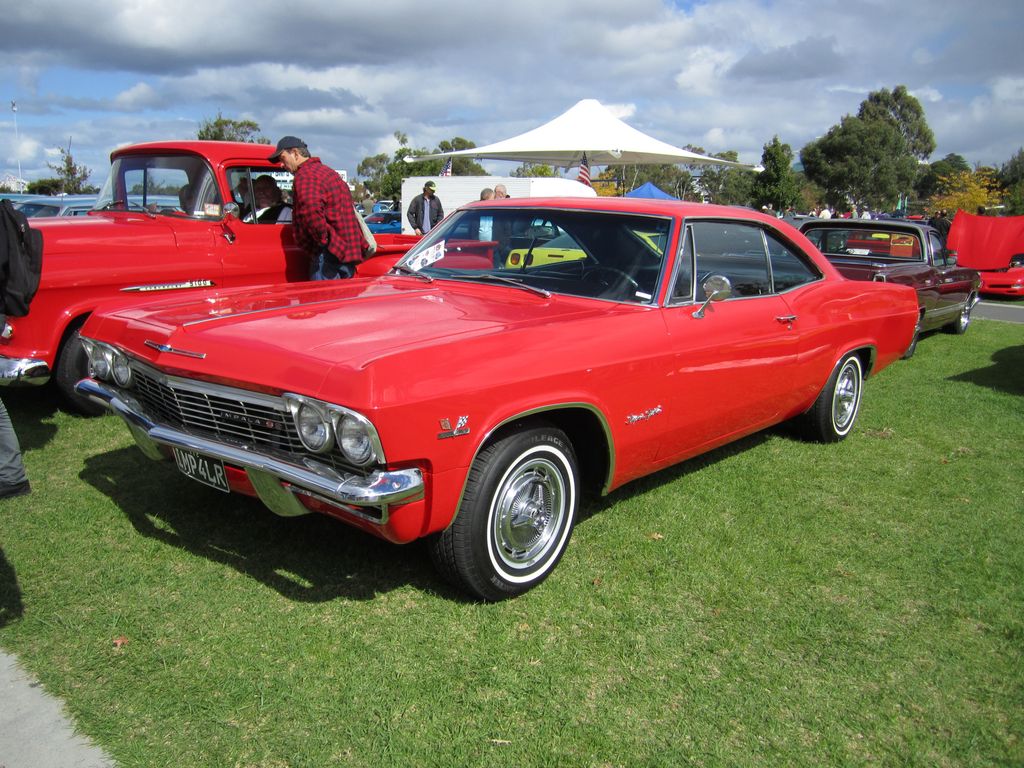
13. **1965 Chevrolet Impala**By 1965, the Chevrolet Impala proudly retained its title as America’s favorite car, reinforcing its position with a newly restyled body that exuded a more massive and substantial presence. These new flowing lines presented a contemporary and elegant aesthetic, moving the Impala forward visually while maintaining its core appeal. Chevrolet’s continuous refinement of its flagship model ensured it remained at the pinnacle of consumer preference, underscoring its immense cultural and market significance.
Within the Impala lineup, the Caprice emerged as a higher-end model, distinguished by its V-8 only powertrain and offering a more luxurious experience for discerning buyers. This tiered approach allowed Chevrolet to cater to a diverse range of preferences, from everyday practicality to more upscale aspirations, all within the beloved Impala family. The Caprice’s introduction signaled a strategic move to offer enhanced sophistication and performance, further broadening the Impala’s impressive market reach.
The 1965 Impala also highlighted the enduring popularity of its open-top versions, with Impala convertibles selling almost as well as the Sport Coupe. This strong performance across body styles demonstrated the model’s versatility and widespread appeal, from those seeking sporty coupes to those desiring the open-air freedom of a convertible. With a cost of approximately $2,780, the 1965 Impala continues to be a highly regarded classic, cherished for its commanding presence, design evolution, and its unwavering status as a quintessential American automobile.
Car Model Information: 1966 Chevrolet Impala SS
Name: Chevrolet Impala
Caption: Fourth-generation model (1967)
Manufacturer: Chevrolet
Production: 1957–1985,1994–1996,1999–2020
ModelYears: 1958–1985,1994–1996,2000–2020
Predecessor: Chevrolet Bel Air,Chevrolet Lumina#Second generation (1995–2001)
Successor: Chevrolet SS,Chevrolet Caprice
Platform: GM B platform,GM W platform,GM W platform (GMX211) (2005–2013),GM Epsilon platform#Epsilon II
Class: Full-size car,Mid-size car
Layout: Front-engine, rear-wheel-drive layout,Front-engine, front-wheel-drive layout
Categories: 1960s cars, 1970s cars, 1980s cars, 1990s cars, 2000s cars
Summary: The Chevrolet Impala () is a full-size car that was built by Chevrolet for model years 1958 to 1985, 1994 to 1996, and 2000 to 2020. The Impala was Chevrolet’s popular flagship passenger car and was among the better-selling American-made automobiles in the United States.
For its debut in 1958, the Impala was distinguished from other models by its symmetrical triple taillights. The Chevrolet Caprice was introduced as a top-line Impala Sport Sedan for model year 1965, later becoming a separate series positioned above the Impala in 1966, which, in turn, remained above the Chevrolet Bel Air and the Chevrolet Biscayne. The Impala continued as Chevrolet’s most popular full-sized model through the mid-1980s. Between 1994 and 1996, the Impala was revised as a 5.7-liter V8–powered version of the Chevrolet Caprice Classic sedan.
In 2000, the Impala was reintroduced again as a mainstream front-wheel drive car. In February 2014, the 2014 Impala ranked No. 1 among Affordable Large Cars in U.S. News & World Report’s rankings. When the 10th generation of the Impala was introduced for the 2014 model year, the 9th generation was rebadged as the Impala Limited and sold only to fleet customers through 2016. During that time, both versions were sold in the United States and Canada. The 10th-generation Impala was also sold in the Middle East and South Korea.
Get more information about: Chevrolet Impala
Buying a high-performing used car >>>
Brand: Chevrolet Model: Impala
Price: $56,991 Mileage: 51,426 mi.
Read more about: The Road to Riches: 15 Classic Cars Skyrocketing in Value for Savvy Enthusiasts
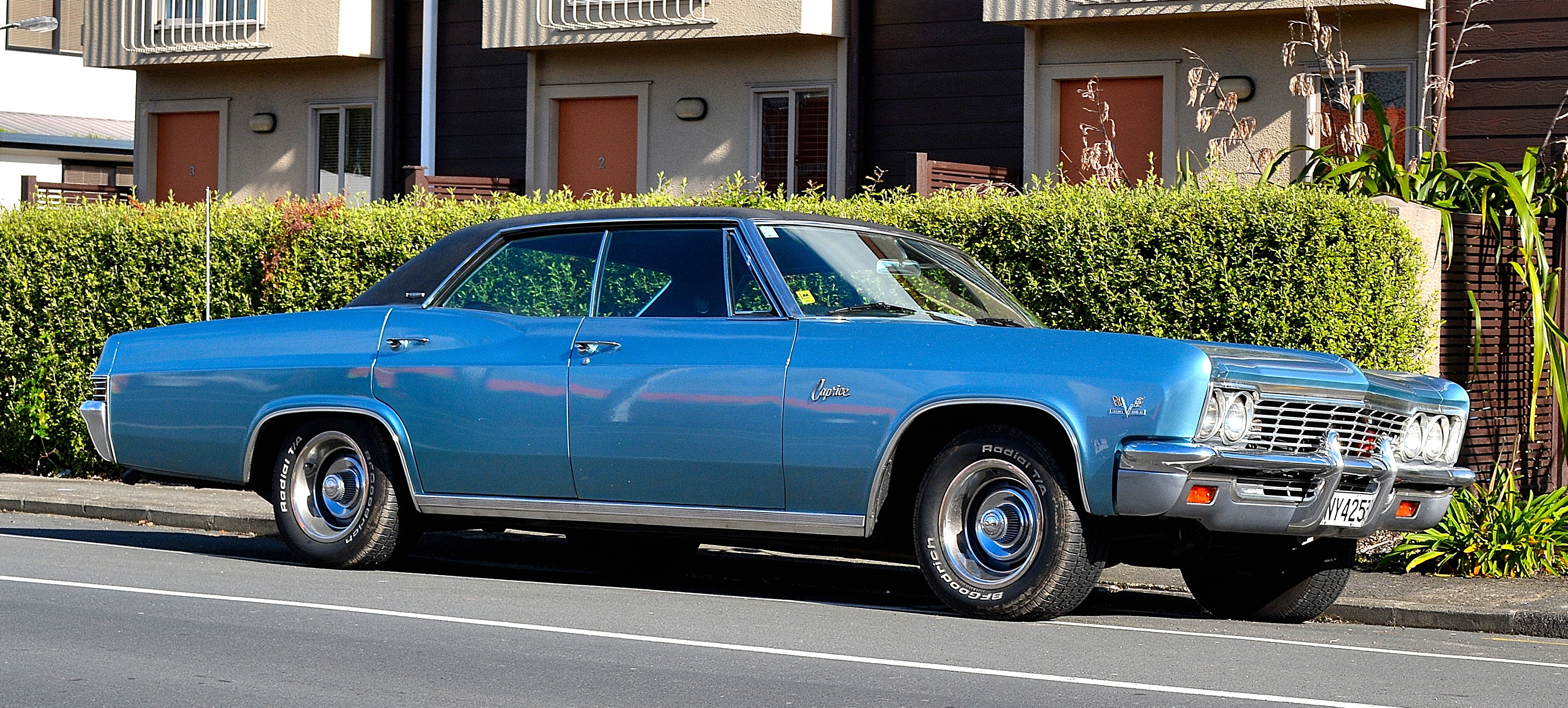
14. **1966 Chevrolet Caprice**In 1966, Chevrolet made a definitive entry into the burgeoning luxury car race with the Caprice, a model designed to attract swarms of middle-class buyers seeking upscale appointments without the prohibitive price tag of traditional luxury marques. The Caprice expertly blended sophistication with affordability, offering an enticing proposition for consumers who desired a touch of elegance and premium features in their daily drivers, thereby redefining accessible luxury in the American market.
The Caprice’s interior was a particular highlight, featuring plush cloth upholstery and distinctive wood-grained trim that exuded a sense of refined comfort and craftsmanship. These thoughtful design elements created an inviting and sophisticated cabin, significantly elevating the driving experience above what was typically expected in its price segment. Such attention to detail in the interior appointments was a key factor in its appeal, positioning the Caprice as a compelling alternative to more expensive luxury cars.
With its emphasis on upscale amenities and easy-on-the-pocket pricing, the 1966 Chevrolet Caprice proved to be a resounding success, capturing a significant share of buyers looking for perceived value and luxury. Available for around $3,025, it offered a compelling blend of style, comfort, and attainability. Today, the 1966 Caprice is revered by collectors who appreciate its role in democratizing luxury, a testament to Chevrolet’s astute market positioning and its ability to deliver premium features to a broader audience, making it a valuable piece of automotive history.
Car Model Information: 1989 Chevrolet Caprice
Name: Chevrolet Caprice
Caption: Chevrolet Caprice PPV
Manufacturer: unbulleted list
Production: unbulleted list
ModelYears: unbulleted list
Predecessor: unbulleted list
Class: Full-size car
Platform: unbulleted list
Layout: FR layout
Categories: 1970s cars, 1980s cars, 1990s cars, 2000s cars, 2010s cars
Summary: The Chevrolet Caprice is a full-size car produced by Chevrolet in North America for the 1965 through 1996 model years. Full-size Chevrolet sales peaked in 1965, with over a million units sold. It was the most popular car in the U.S. in the 1960s and early 1970s, which, during its production, included the Biscayne, Bel Air, and Impala.
Introduced in mid-1965 as a luxury trim package for the Impala four-door hardtop, Chevrolet offered a full line of Caprice models for the 1966 and subsequent model years, including a “formal hardtop” coupe and an Estate station wagon. The 1971 through 1976 models are the largest Chevrolets built. The downsized 1977 and restyled 1991 models were awarded Motor Trend Car of the Year. Production ended in 1996.
From 2011 until 2017, the Caprice nameplate returned to North America as a full-size, rear wheel drive police vehicle, a captive import from Australia, built by General Motors’s subsidiary Holden. The police vehicle is a rebadged version of the Holden WM/WN Caprice. The nameplate also had a civilian and police presence in the Middle East from 1999 until 2017, where the imported Holden Statesman/Caprice built by Holden was marketed as the Chevrolet Caprice in markets such as Saudi Arabia and the UAE.
Get more information about: Chevrolet Caprice
Buying a high-performing used car >>>
Brand: Chevrolet Model: Caprice
Price: $19,000 Mileage: 98,103 mi.
Read more about: The Ultimate Throwback: 14 Cars That Every Grandma (And Probably Your Mom) Drove
As we conclude this exploration of Chevrolet’s most valuable cars from the 1960s, it’s clear that this remarkable decade wasn’t just about horsepower and cutting-edge design; it was about an era where automotive dreams were forged in steel and captured the American spirit. From revolutionary sports cars that broke new ground to family favorites that defined suburban cool, Chevy consistently delivered machines that blended innovation, performance, and undeniable allure. Each model we’ve highlighted, whether a limited-production track weapon or a mass-market icon, tells a rich story of engineering ambition and cultural impact. These vehicles are more than just metal and glass; they are tangible pieces of history, preserving the passion, ingenuity, and sheer joy of driving from a truly unforgettable time.

